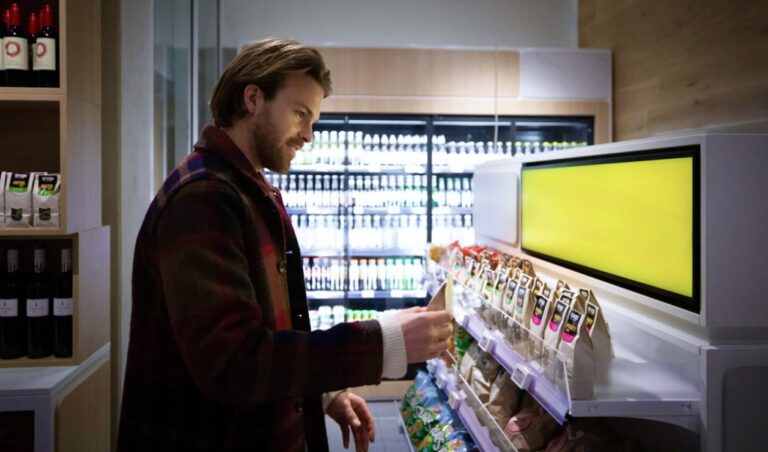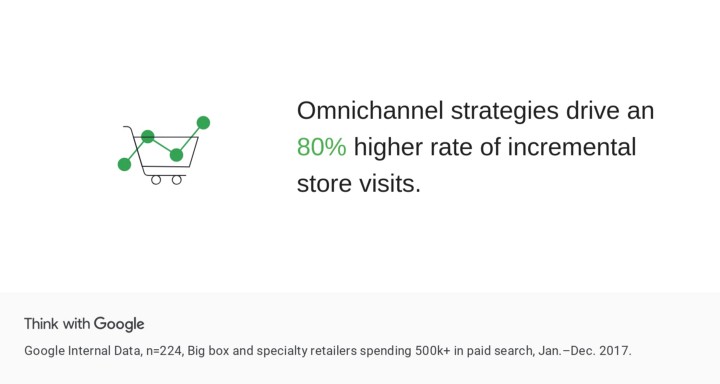
25 Aug The Appeal of Omnichannel Retail and How Retailers Can Embrace the Transition for Physical Retail
The exponential growth of e-commerce made it seem like traditional retail was on the brink of extinction. However, the rise of e-commerce is not the downfall of the brick-and-mortar store.
More and more, customers are embracing shopping experiences that span multiple channels and platforms. During the pandemic, shoppers were introduced to the convenience of curbside pickup, autonomous checkout, and contactless payments — and this is fast becoming the norm.
Find out how the convenience of these multi-level shopping experiences is forming an omnichannel retail future and how your business can be a part of it.
Why are customers drawn to omnichannel retail?
 Omnichannel is a marketing approach that enables users to access products or services via multiple channels, platforms, and devices. For example, instead of only selling in-store, a company can also sell online.
Omnichannel is a marketing approach that enables users to access products or services via multiple channels, platforms, and devices. For example, instead of only selling in-store, a company can also sell online.
Customers respond very well to omnichannel strategies. Organizations that invest in omnichannel engagement programs tend to keep 89% of their customers, compared to 33% retention for businesses with a strong offering
What’s the appeal behind omnichannel retail? On average, consumers use six touchpoints to buy an item. While multi-channel sales allow customers to purchase products anywhere, those experiences remain disconnected. Omnichannel, on the other hand, supports greater convenience of accessing products and services in any channel.
Omnichannel strategies increase sales into different channels while increasing store visits.
Four reasons customers prefer omnichannel marketing
The shift to e-commerce doesn’t mean customers are totally moving away from brick-and-mortar shopping experiences. In reality, consumers prefer having options when making purchases and are likely to engage a business in several ways. Here are some reasons an omnichannel experience is a favorite among consumers:
1. They want to save time
Online shopping increased consumer demand for instant gratification. Gone are the days of cumbersome long shopping experiences. These days consumers expect efficient retail experiences. Optimizing each channel, working together in a unified strategy can save the customers’ time. When your e-store and your physical store are integrated, customers can quickly check what you have available on which store before buying.
2. They want convenience
Modern consumers want to buy however, whenever, and wherever is more convenient for them. An effective omnichannel strategy is excellent for giving customers several shopping options, be it on the site, through a social media shoppable ad, or in-store. Implementing an omnichannel strategy goes beyond selling on multiple channels. It involves offering timely service and support to improve the user experience.
3. They want to reach your products and services anytime, from anywhere
By leveraging multiple channels, you provide streamlined access to your products or services anytime a customer may want. Consumers want to have a seamless, integrated digital and online shopping experience. Therefore, it is essential to provide the same level of service online and in-store. Your customers need convenient and fast service regardless of location. Autonomous retail allows stores to be open 24/7 for the highest level of convenience.
4. They want a seamless in-store experience
An omnichannel strategy enables consumers to connect their digital experiences with the physical purchases they make. The customer can choose to research or buy online but pick products up in-store. When you offer a seamless and optimized omnichannel experience, your brand helps customers save time while purchasing the products and services they want.
Why businesses hesitate to embrace omnichannel retail
Effective omnichannel retail provides consumers a unified experience that connects digital and physical channels, but businesses are often hindered by the technology required:
- Connected online and physical presence
- Creation of a unified experience for the customer
- Shared data across channels
The goal is to personalize the customer experience as much as possible. Companies looking to adopt an omnichannel strategy need to embrace digital transformation. The cost and complexity of transforming their retail technology are the greatest barriers to implementing omnichannel sales.
Most retailers will have legacy POS and ERP systems. Sometimes the ERP system is customized and integrated with other internal systems. Typically, companies are required to shell out a sizeable investment in their digital transformation. New solutions, however, enable you to control the investment and integration. Therefore, companies need to be proactive in adopting newer systems as quickly as possible to leverage this data — or risk being left behind.
How to transition from physical retail to omnichannel retail
Delivering great customer experiences in omnichannel retail is about enabling your customer’s access to your products or services regardless of the customer’s location. The first step to transitioning to omnichannel retail is choosing the right technology. The solution needs to effectively build a digital twin of the physical store, which can understand shoppers’ preferences, enable service optimization, and even incumbent new business models.
An autonomous shopping solution is the key for organizations to digitize physical stores and empower customers. Autonomous shopping is a good example of integrating technology into the omnichannel process. Autonomous stores link the store with customers’ purchases. The system combines online shopping convenience with in-person shopping and a frictionless checkout.
Learn more about how AiFi’s autonomous shopping can help bridge the gap between physical and online shopping. Request your demo today.





















